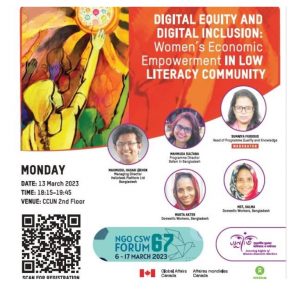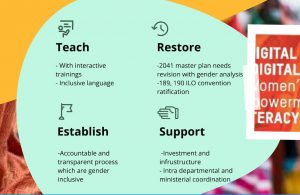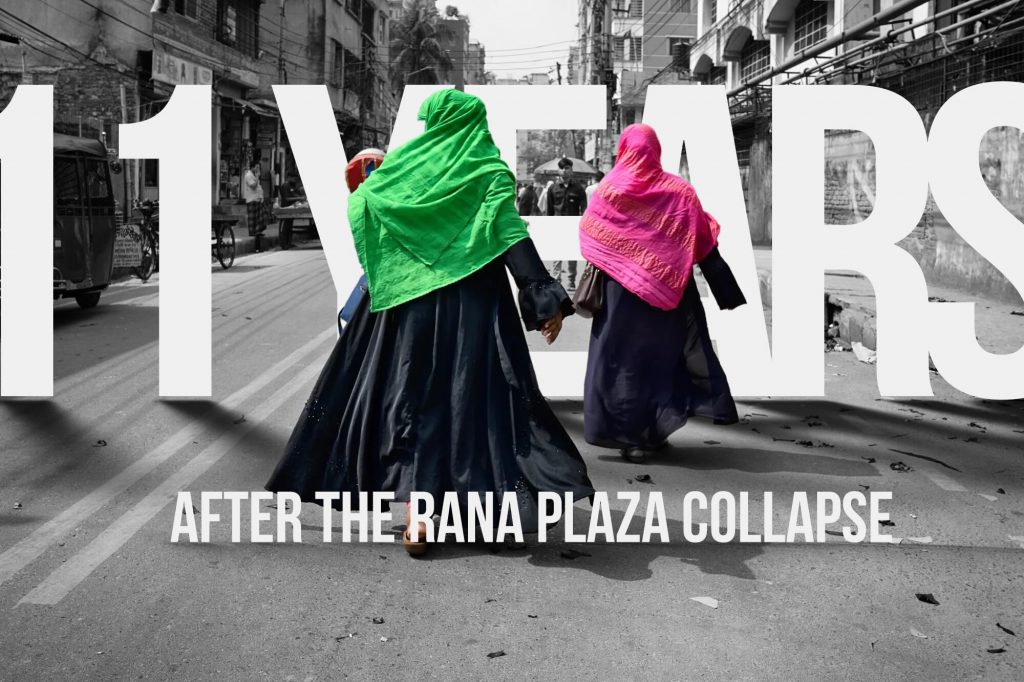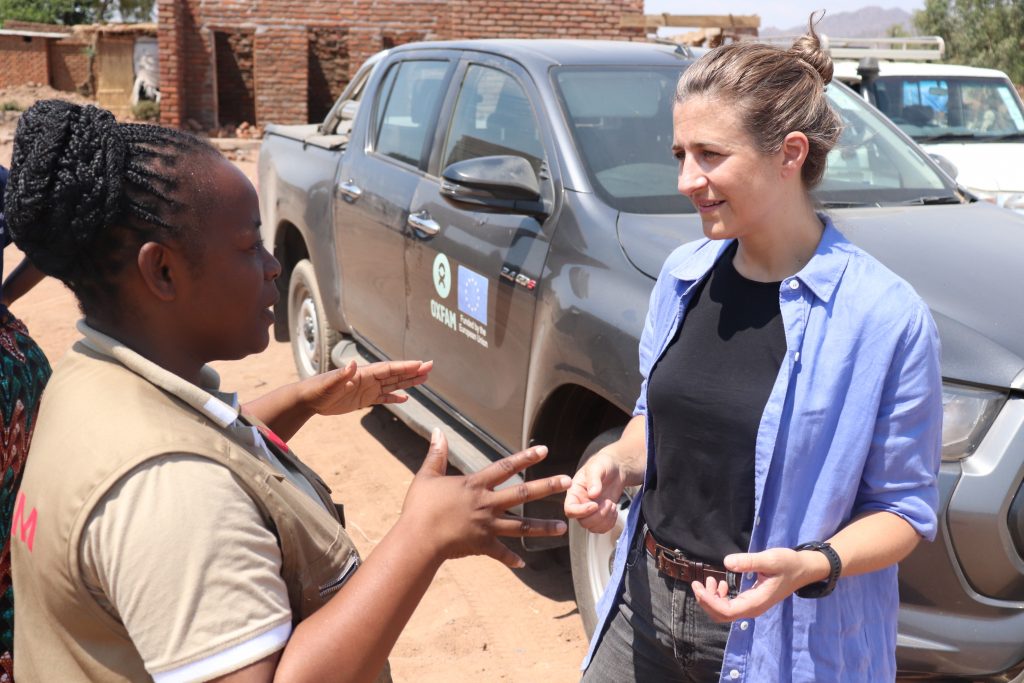Digital Inclusion: Oh, the irony
Their US visas in hand, Salma and Mukta, were making their way to their flight from Bangladesh to New York when they were told their trip was over. The pair, two domestic workers from Bangladesh, who were invited to speak at a side event on digital inclusion and equity in their community at the Commission on the Status of Women (CSW67), were told their COVID-19 vaccine certificates were not updated on their government’s website.
In short, they couldn’t get on the plane to come to a digital inclusion event because they weren’t included on the Bangladesh digital platform in time for their trip.
Irony, sometimes, can be so rich. Especially since the theme for this year’s CSW was ‘Innovation and technological change, and education in the digital age for achieving gender equality and the empowerment of all women and girls.’ Salma and Mukta were going to be part of an in-person panel parallel event on Digital Equity and Digital Inclusion: Women Economic Empowerment in low literacy community on March 13.
Bangladesh's Current Digital Climate
Bangladesh has clearly made a remarkable journey towards mass digitization. Under the current government’s Bangladesh Vision 2041 is a national strategic five-year plan to be done between 2022 and 2041 with the aim of achieving a high-income status through industrialization, their ultimate goal is to become affluent, advanced, poverty-free, and an equitable nation. To achieve this goal, Information Communication and Technology (ICT) plays a major role in that plan.
In the last 10 years alone, internet penetration in Bangladesh has gone up 100 times. But, when you break things down by gender and change the lens – women use the internet 48 per cent less than men in the country (GSMA, Mobile Gender Gap Report 2022). The digital Bangladesh campaign promises tangible benefits to citizens, especially the under-represented. However, in reality that is rarely the case.
Let’s go back to Mukta and Salma. They represent 10.5 million domestic workers who have had little to no opportunity to have an education. So, when the government digitalized the COVID-19 vaccination process, it missed understanding how people like Mukta and Salma would be impacted. The process put in place did not consider that Bangladesh has the highest gender gap in mobile internet usage among 10 low- and middle-income countries. Women are not considered and most certainly women from poor communities appear to be invisible.
The Barriers
After chatting with colleagues and peers across Dhaka, it was evident the COVID-19 vaccine registration and certification process was developed without a gender lens or an understanding that a large part of the population would not have access to it.
 There is an online portal for an individual’s vaccine information, which even people with a formal education have difficulties filling out. In addition to internet access and filling out online forms, they need a National ID (which is another story) to register.
There is an online portal for an individual’s vaccine information, which even people with a formal education have difficulties filling out. In addition to internet access and filling out online forms, they need a National ID (which is another story) to register.
There’s that irony again. Since Mukta and Salma were two amongst a million who received their vaccination through mass vaccinations – their vaccine status information was not available on the government website. And as a result, the pair had to miss the event they were supposed join at the CSW67 in New York, which was aimed at addressing these exact challenges and provide recommendations to the government and other stakeholders.
WATCH: The CSW67 session on Digital Inclusion and Digital Equity: Women Economic Empowerment in low literacy community.
"When there is a basic access limitation for the women for a mobile device and internet, how can the government expect the 2041 digital Bangladesh master plan to succeed. Government needs to put focus on more gender transformative programming," said Mahmuda Sultana, Program Director of Oxfam in Bangladesh.
The event called for actions such as the government doing a proper and thorough gender analysis and revising the 2041 masterplan; and the government to ratify ILO Convention 189 (Domestic Worker’s Rights) and 190 (Sexual Harassment and Violence at the workplace).
We can hope that the government of Bangladesh shines the light on this issue that impacts not only domestic workers but all the other informal labour sectors where there is a significant presence of women and take the appropriate actions.
We do not want to continue having discussions without people like Mukta and Salma at the table.
Shamminaz Polen is a manager at Oxfam Canada's International Program Department.

